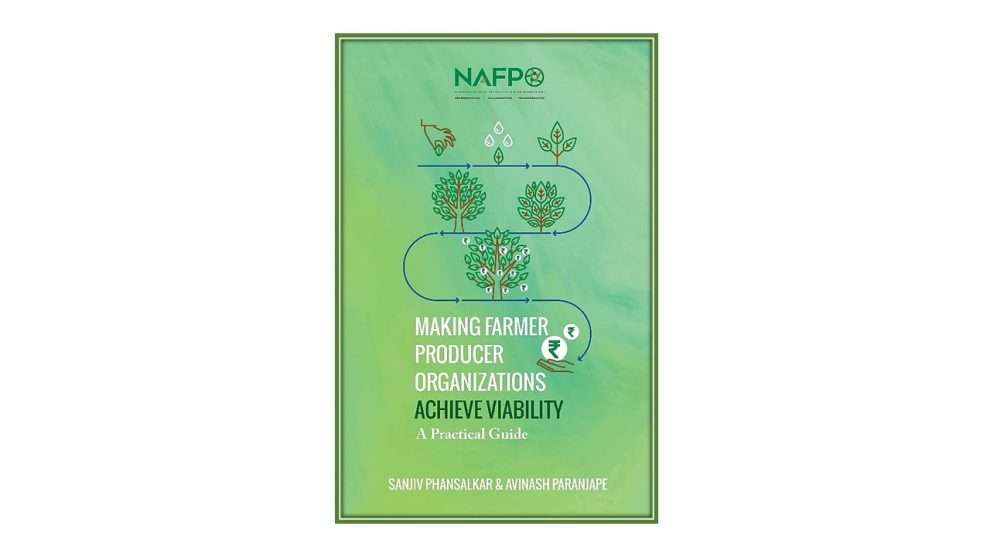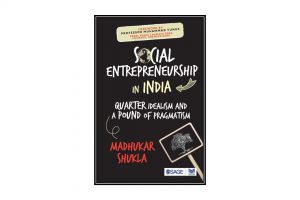Sanjiv Phansalkar and Avinash Paranjape
National Association of Farmer Producer Organizations (NAFPO)
ASIN: B098336ZNP
INR. 799 (Paperback); INR. 295 (Amazon Kindle, July 2021)
Pages: 133
Farmer Producer Organizations (FPOs) are the new look cooperatives, formed by a group of farmers engaged in business of specific commodities and registered under the Companies Act. The Government of India and other developmental organizations across the world are promoting FPOs as a solution to problems of small and fragmented holdings. Recently the Government of India launched a central sector scheme ‘Formation and Promotion of 10,000 new Farmer Producer Organizations (FPOs)’. However, the unfortunate part of these efforts is that the establishment of FPOs are considered an end in itself, rather than on how well FPOs are performing and how sustainable they are in the long run. Literature on FPOs also focus more on how FPOs are established, what determines the participation of the members, and quantifying the benefits of participating in FPOs, but little is being written on the sustainability of FPOs and how they can be successful even when the support provided by the promoting organization is withdrawn. This book aims to fill that void, and provides practical information on how to profitably run an FPO.
In the very beginning itself the author clearly mentions who the book is aimed at – the target readers for the book are those who are engaged in managing an FPO or those who are interested in promoting an FPO. The book offers a detailed discussion on common problems that FPOs face and practical guidance on how to overcome these with examples, which can be very useful tools in training the employees of FPOs. In this review, I aim to provide a brief overview of what to expect from this book.
If I have to pick the one most important message from the book, then it is that the FPO is a business entity, established with an aim to encash a specific and unique business opportunity, and not a project with a specific timeline. Unfortunately, the government support to FPOs is turning out to be a perverse incentive: the funds are given for establishing FPOs and for sustenance during some initial years, with a specific timeline as in the case of projects, but viability of the FPO as a business entity is rarely considered as an outcome of interest. They expect FPOs to run by themselves once the external funding is stopped at the end of the project period, which is unrealistic unless the FPO operates on sound business principles. Unless FPOs are viable, they cannot be relevant; it is more important to train FPOs to focus on business principles that enable them to maintain financial viability rather than on increasing the number of FPOs registered. That is where the contribution of this book is immense.
FPOs are different from other business entities as they have different sets of hurdles, which means different sets of business principles also need to be used. The book highlights and elaborates four different ways in which FPOs are unique. One should be aware of these challenges even before establishing an FPO.
- FPOs are member-oriented firms, where each member contributes to the capital and provides patronage services to members, unlike other companies which are investor-oriented firms. So, in a member-oriented firm, the focus is more on service delivery, and it is difficult to accumulate the capital needed for investment.
- Sustaining the collective action over longer periods of time is difficult: When there is a downside risk (fall in prices of agricultural commodities), the farmers expect FPO to bail them out by providing a remunerative price. But in the event of an upside risk (case where market prices are higher than that offered by FPO) they often cheat by selling the product elsewhere. Fundamentally this happens when individuals pursue individual welfare sacrificing the long term collective good.
- FPOs are a business entity and are not immune to business risks: How an FPO remains viable during good and bad business phases has an implication on its long-term sustainability.
- There are difficulties relating to collective action arising out of power struggles in rural societies and differences of caste, religion and class structures.
Most of the remaining sections in the book are dedicated to elaborating on how FPOs can remain viable and relevant. Though the role of an FPO is to provide service to the producers by means of aggregation of products and inputs, it has to be able to cover its operating costs from the business revenue. It goes without saying that an FPO should first help itself if it has to help farmers.
The book details five different levels of financial viability and describes each with an example. The exercise can be extremely helpful for FPOs, especially when they want to assess where they stand and what they can do to improve their position in terms of finances. Appropriately, the next chapters deal with what drives the viability of FPOs – scale, scope, product mix, competitive advantage, processing, business practices, etc., are all necessary to ensure viability. Examples of business practices that are ideal and tackle different scenarios are provided and are noteworthy. However, I am slightly disappointed at not seeing more on ‘branding’. In agricultural marketing, we say that there is no product differentiation. Without product differentiation, there won’t be a comparative advantage, and it is difficult to charge a premium price. If there is no comparative advantage, the benefits of an FPO may be limited to the advantages and returns due to aggregation, which may not be sufficient to make it viable. So ‘branding’, according to me, is a very important part of the marketing strategy of any FPO and deserves more elaboration. Subsequently the book also highlights some problems that FPOs face in terms of capital formation, the problems that a multi-product (or multi-crop) FPO faces and offers some guidelines.
OVERALL IMPRESSION
The book, as it promises at the very beginning, is a very handy tool for FPOs and provides very useful guidance on how to run it with viability and sustainability as the main outcomes. The book can be a handy resource for training the persons involved in management of FPOs. The exercises are useful to reinforce the learnings. Having said that, I would have loved to see more case studies in the book. Though some examples are provided here and there, a few comprehensive case studies of successful FPOs as well as of failures could have been helpful.
ADITYA KS
 Aditya KS is a scientist at Division of Agricultural Economics, ICAR-Indian Agricultural Research Institute, New Delhi. You can find him at his blog: adityarao.wordpress.com. To get in touch, email at adityaag68@gmail.com.
Aditya KS is a scientist at Division of Agricultural Economics, ICAR-Indian Agricultural Research Institute, New Delhi. You can find him at his blog: adityarao.wordpress.com. To get in touch, email at adityaag68@gmail.com.





This book may be a valuable resource for those engaged in FPO facilitation or management. As rightly pointed out by the book reviewer, not much resources are available for training the professionals on FPO management and this book may fill the gap. Looking forward to grabbing a copy of this book.
In last few years, particularly after the launch of the central sector scheme, “Formation and Promotion of 10,000 new Farmer Producer Organizations (FPOs)’, there is spurt on FPOs forcing more people to look for information on FPOs than ever before. Many agricultural development organizations including KVKs , NABARD, DoA have been given targets to form FPOs and lot many are not well aware about how to establish, sustain and ensure success of FPOs. Under this scenario, this book is very timely, more so when it is claimed a practical guide for achievening viability of FPOs. I congratulate not only the authors but also Dr Aditya, K S who has reviwed it very keenly with subtle observations. Rightly pointed out by the reviwer that ‘branding’ is a very important part of the marketing strategy of any FPO calling for more elaboration in the book but largely missing. It is appreciable that the book has elaborated on how FPOs can remain viable and relevant- which almost all the readers would be looking for. I agree with the reviwer that there should have been some success stories based on comprehensive case studies of successful FPOs including of failures could have been helpful. Finally, I appreciate and congratulate AESA for getting reviwed important publications, which stimulates us intellectually and professionally. In extension discipline, not many are engaged in such academic and professional development activities beyound certificates and awards!